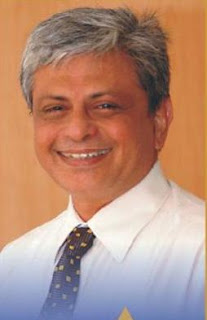Picture credit - DeekshaLearning
What is Decision-Making Skill?
How to improve Decision-Making Skill?
- Learn - Invest time in learning different models/ techniques of Decision-Making
- Apply -
- Identify a model suitable to you
- Create a template to document the flow of the process
- Find opportunities to use the selected method/ template
- Maintain record/ process flow of every decision you make
- Maintain notes of your thoughts/ insights/ failures/ challenges…. to be used for sharing/ training others
- Share - Share the insights captured in step 2 above in a planned manner (social media posts, blogs, videos, study notes…)
- Train - Generate opportunities to train your peers and team members so that, over time, your organization benefits from your efforts
My learning for the day
Challenges when taking decisions
- Uncertainty – Many of the facts may be unknown.
- Complexity – There can be many, interrelated factors to consider.
- High-risk consequences – The impact of the decision may be significant.
- Alternatives – There may be various alternatives, each with its own set of uncertainties and consequences
- Interpersonal issues – You need to predict how different people will react.
A Systematic Approach for Making Decisions
- Create an appropriate environment by documenting
- List of stakeholders
- Method/ model to be used for decision making
- Data sources to be used for taking decisions
- Milestone/ communication plan so that all stakeholders are on a single page
- Investigate the situation
- Analyse the problem using 5 Whys, Fishbone….
- Generate alternatives
- Evaluate and choose the best fit option with available inputs of the time (including execution plan)
- Communicate the decision (including the supporting documentation)
- Maintain the documentation for future use
Purpose of this document
What are Life Skills?
- cognitive skills for analyzing and using information,
- personal skills for developing personal agency and managing oneself,
- inter-personal skills for communicating and interacting effectively with others.
Which LifeSkills are covered?
- Decision-making
- Problem-solving
- creative thinking
- critical thinking
- communication
- interpersonal skills
- Self-awareness
- Empathy
- coping with emotions
- coping with stress.
Some trivia
- Zimbabwe and Thailand - prevention of HIV/AIDS
- Mexico - prevention of adolescent pregnancy
- United Kingdom - child abuse prevention
- USA - prevention of substance abuse and violence
- South Africa and Colombia - positive socialization of children.
128 words - 1 minute reading - Flesch–Kincaid readability score 70-60 - English
Decision-Making Skill is the ability to use a decision making process or technique to arrive at a decision.
There are typically six steps is the decision making process.
Step 1 - List down all stakeholders who will be impacted by the decision.
Choose the method that you propose to use. There are many decision making models such as the Vroom-Yetton model, Rational decision-making model etc. to choose from.
Identify the data that will be used for taking decisions.
Decide how to communicate the decision to the stakeholders.
Step 2 - This stage is called the situation investigation. Here are the steps for situation investigation.
Analyse the problem using 5Whys, Fishbone analysis etc.
Define the problem in a scientific manner. The IRCP method is a good way to define a problem. IRCP is Ideal State, Reality, Consequences and Proposal.
Step 3 - Generate alternatives to choose from using techniques such as brainstorming, decision tree etc..
Step 4 - Assess the alternatives using cost benefit analysis, risk analysis etc. and choose the most suitable alternative.
Step 5 - Communicate the decision to the stakeholders giving all the necessary information about the decision.
Step 6 - Maintain the records for future reference.
We face a few challenges when making decisions. Some of the common challenges are as below.
The first challenge is about the complexities involved. There can be many interrelated factors to consider. This makes the decision making complex.
The second challenge is the impact of the decision. If the impact of the decision is huge, we feel a lot of stress and cloud our thoughts.
Then there could be a problem of plenty, what we call as abundance syndrome. When there are too many alternatives to choose from, we do not know what to choose.
Also, there could be many vested interests that may come in the way or some interpersonal issues may crop up. All these may impact the objectivity in decision making.
Hindi


No comments:
Post a Comment